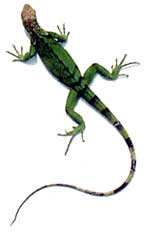 |
 |
 |
A
large petroleum facility can be seen from an overlook
near Willemstad.
|
 |
 |
| The
streets of Willemstad's Otrabanda district. |
|
 |
Across
the harbor on the "Otrabanda", literally the
"other side" of the city, lies a lively, yet less
dense urban landscape. A few casinos, hotels, and some humble
monuments dot its narrow streets. In commemoration of the Dutch
Queen's birthday (at the end of April) both sides of the city
merge in a raucous celebration. Craft merchants and food stands
compete for attention with bands on the congested sidewalks and
streets. Spontaneous songs break out in the festive atmosphere,
and the party lasts late into the evening hours.
The outer
fringes of Curaçao beg to be explored -- from the hilly
expanses of Christoffel Park with its diverse plant and animal
life to the varied beaches that line the coast. There seems to
be no prevailing type of beach here, but rather an unpredictable
mix of windy-and-rocky or sheltered-and-sandy or
heavily-developed or isolated stretches of shoreline.
Unfortunately, the one attribute that they all seem to share is
a nasty accumulation of trash. |
 |
 |
 |
| A
young green iguana scurries for shelter across a patch
of pure white sand. |
|
 |

